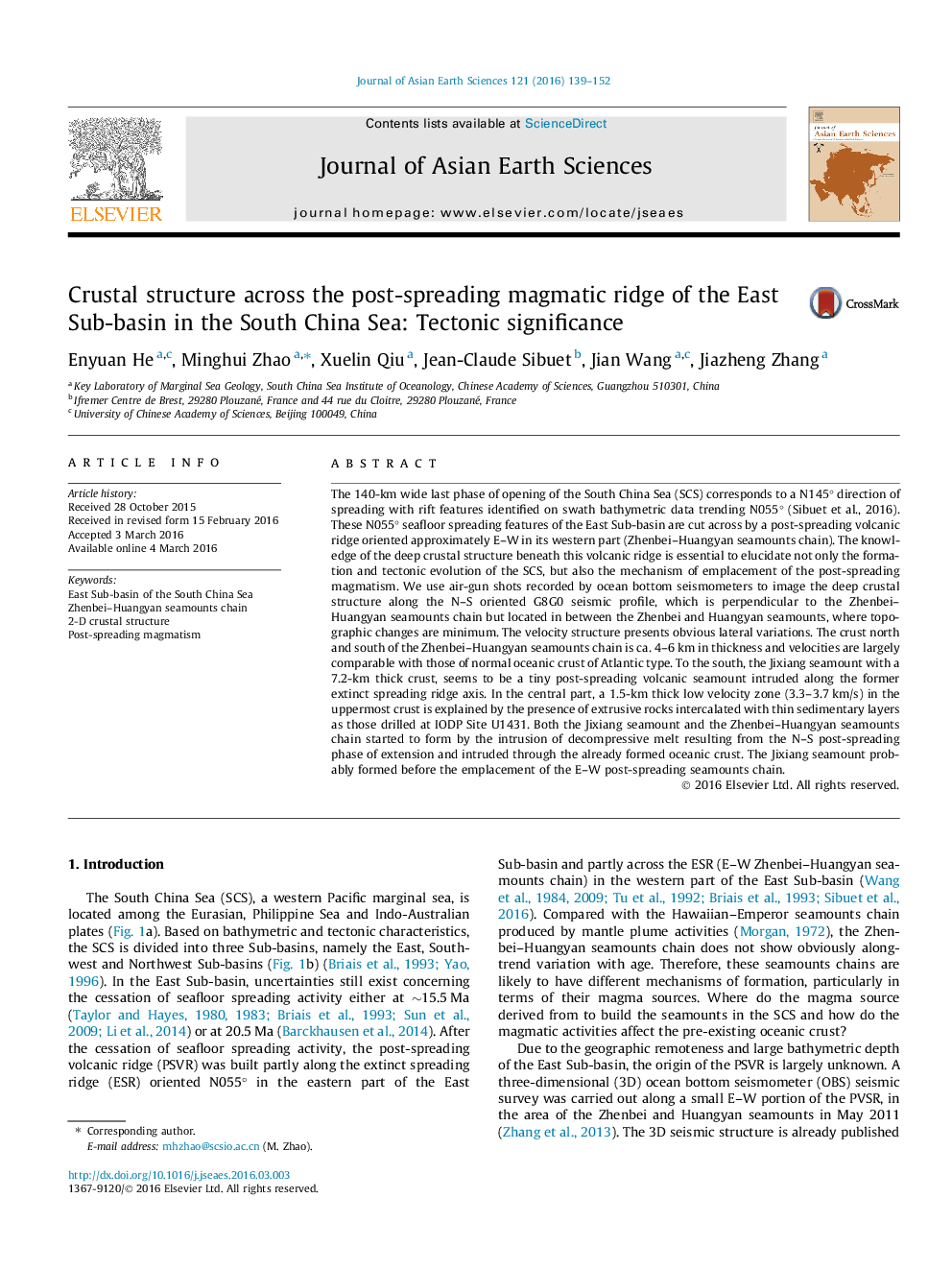| کد مقاله | کد نشریه | سال انتشار | مقاله انگلیسی | نسخه تمام متن |
|---|---|---|---|---|
| 4730076 | 1640350 | 2016 | 14 صفحه PDF | دانلود رایگان |
• The 2D velocity structure corresponds to oceanic crust affected by post-spreading magmatism.
• The low velocity body might correspond to extrusive rocks intercalated with sedimentary layers.
• The Jixiang seamount maybe formed by the buoyancy-driven upwelling mechanism.
The 140-km wide last phase of opening of the South China Sea (SCS) corresponds to a N145° direction of spreading with rift features identified on swath bathymetric data trending N055° (Sibuet et al., 2016). These N055° seafloor spreading features of the East Sub-basin are cut across by a post-spreading volcanic ridge oriented approximately E–W in its western part (Zhenbei–Huangyan seamounts chain). The knowledge of the deep crustal structure beneath this volcanic ridge is essential to elucidate not only the formation and tectonic evolution of the SCS, but also the mechanism of emplacement of the post-spreading magmatism. We use air-gun shots recorded by ocean bottom seismometers to image the deep crustal structure along the N–S oriented G8G0 seismic profile, which is perpendicular to the Zhenbei–Huangyan seamounts chain but located in between the Zhenbei and Huangyan seamounts, where topographic changes are minimum. The velocity structure presents obvious lateral variations. The crust north and south of the Zhenbei–Huangyan seamounts chain is ca. 4–6 km in thickness and velocities are largely comparable with those of normal oceanic crust of Atlantic type. To the south, the Jixiang seamount with a 7.2-km thick crust, seems to be a tiny post-spreading volcanic seamount intruded along the former extinct spreading ridge axis. In the central part, a 1.5-km thick low velocity zone (3.3–3.7 km/s) in the uppermost crust is explained by the presence of extrusive rocks intercalated with thin sedimentary layers as those drilled at IODP Site U1431. Both the Jixiang seamount and the Zhenbei–Huangyan seamounts chain started to form by the intrusion of decompressive melt resulting from the N–S post-spreading phase of extension and intruded through the already formed oceanic crust. The Jixiang seamount probably formed before the emplacement of the E–W post-spreading seamounts chain.
Journal: Journal of Asian Earth Sciences - Volume 121, 1 May 2016, Pages 139–152
